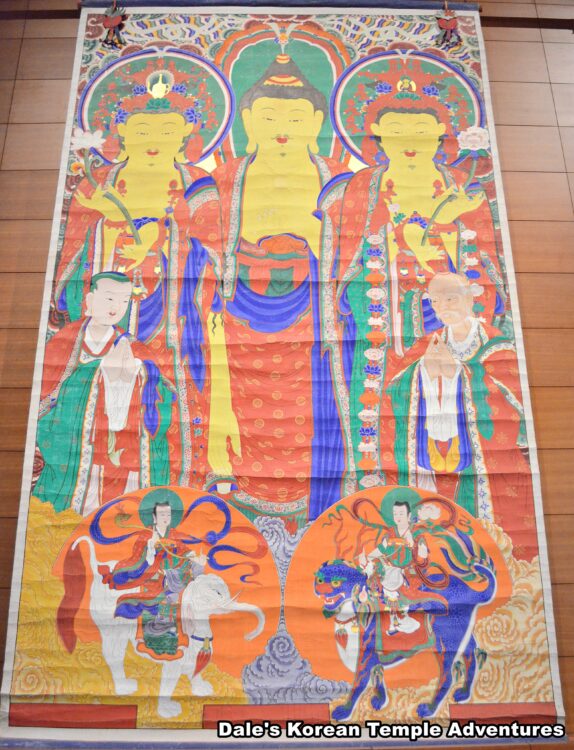Gwaebul – Large Buddhist Banner Painting: 괘불
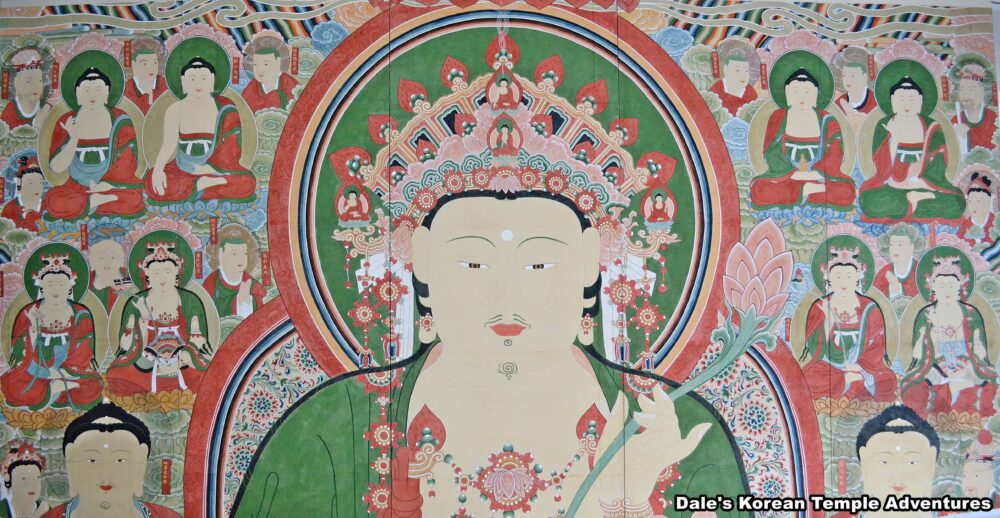
Introduction
In yet another post about Korean Buddhist temple artwork, I thought I would discuss the Gwaebul, which is a “Large Buddhist Banner Painting” in English. So where can you find this rarely seen piece of temple artwork? What does it look like? And why do you find it at a Korean Buddhist temple?
The Gwaebul
A “Gwaebul – 괘불” is a large hanging mural that can be over fifteen metres in height and ten metres in width. Gwaebul are rarely seen, as they are typically only put on display once a year during Buddha’s Birthday festivities. At some temples, a Gwaebul is only put on display once every ten years during these festivities.
The production of Gwaebul became a large expense and effort not only for the temple but for the community. As a result, the rituals performed at local temples served to address, through the visual aid and support of the Gwaebul, to deal with local, rather than national, concerns. For example, the feeding of locals and the rain required to grow crops (more on that later from the Gwaebul at Geumdangsa Temple).
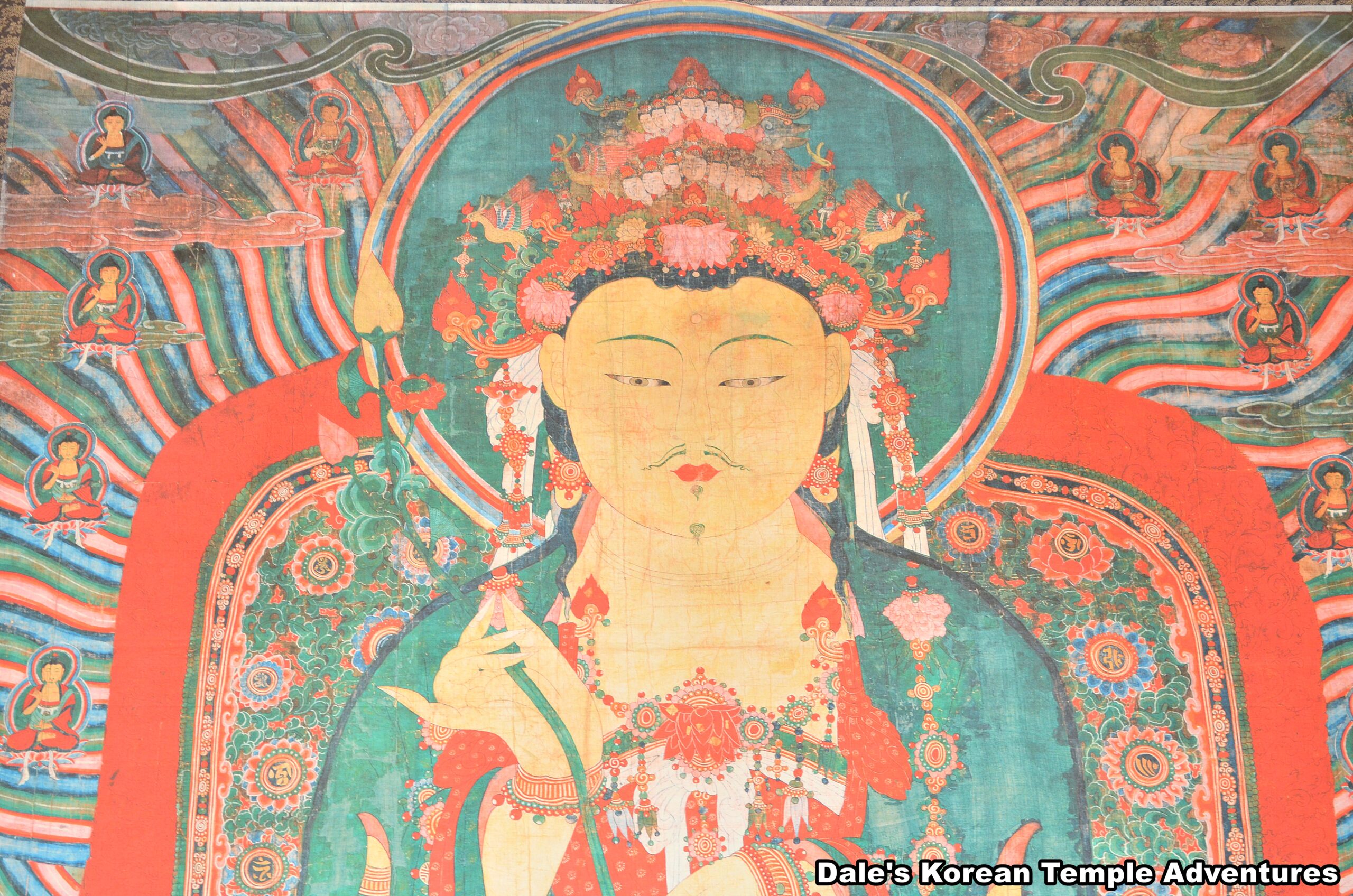
The oldest Gwaebul still in existence dates back to 1622 at Jukrimsa Temple in Naju, Jeollanam-do. In comparison to other Gwaebul, it’s rather small and simple in composition. This Gwaebul depicts a lone Seokgamoni-bul image making the mudra of “Touching the Earth.”
In total, there were twenty-three Gwaebul made during the 17th century. There were an additional twenty-two made during the 18th century. And there were thirteen subsequent Gwaebul painted in the 19th century, followed by four more during the early part of the 20th century.
These hanging murals are typically quite large in size. The reason for their amazing size is that they are meant to be put on display outdoors during large gatherings that would commonly attract several hundreds, to even thousands, of people. These large crowds of worshipers would help raise funds for the temple. The Gwaebul is hung from tall support poles in the main temple courtyard. And when a Gwaebul isn’t being used for special festivities, they are folded up and stored inside a temple shrine hall. Most typically, they are housed somewhere inside the main hall; and usually, under the main altar.
Gwaebul Design
Because of the Gwaebul’s large size, it’s typically filled with a lot of intricate designs and details. Traditionally, a large Buddha is the dominating central figure in the hanging painting. This Buddha is then surrounded by various Bodhisattvas, Nahan (The Historical Disciples of the Buddha), and various guardians like the Sacheonwang (The Four Heavenly Kings). These images are often depicting a scene from an important sutra. The central Buddha is typically Seokgamoni-bul (The Historical Buddha), Amita-bul (The Buddha of the Western Paradise), or even Gwanseeum-bosal (The Bodhisattva of Compassion) in some rare cases. The earliest Gwaebul hanging paintings often depict the Assembly at Vulture Peak, as they were meant to represent the Buddha, Seokgamoni-bul, in a contemporary world. In this style of painting, Seokgamoni-bul is seen preaching the Lotus Sutra.
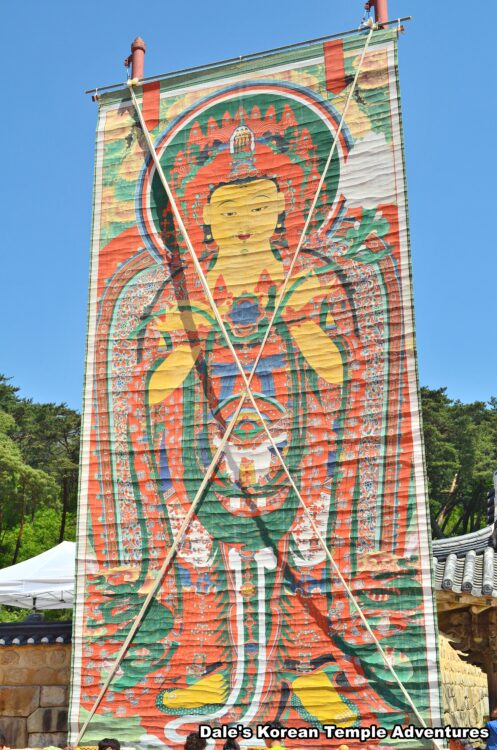
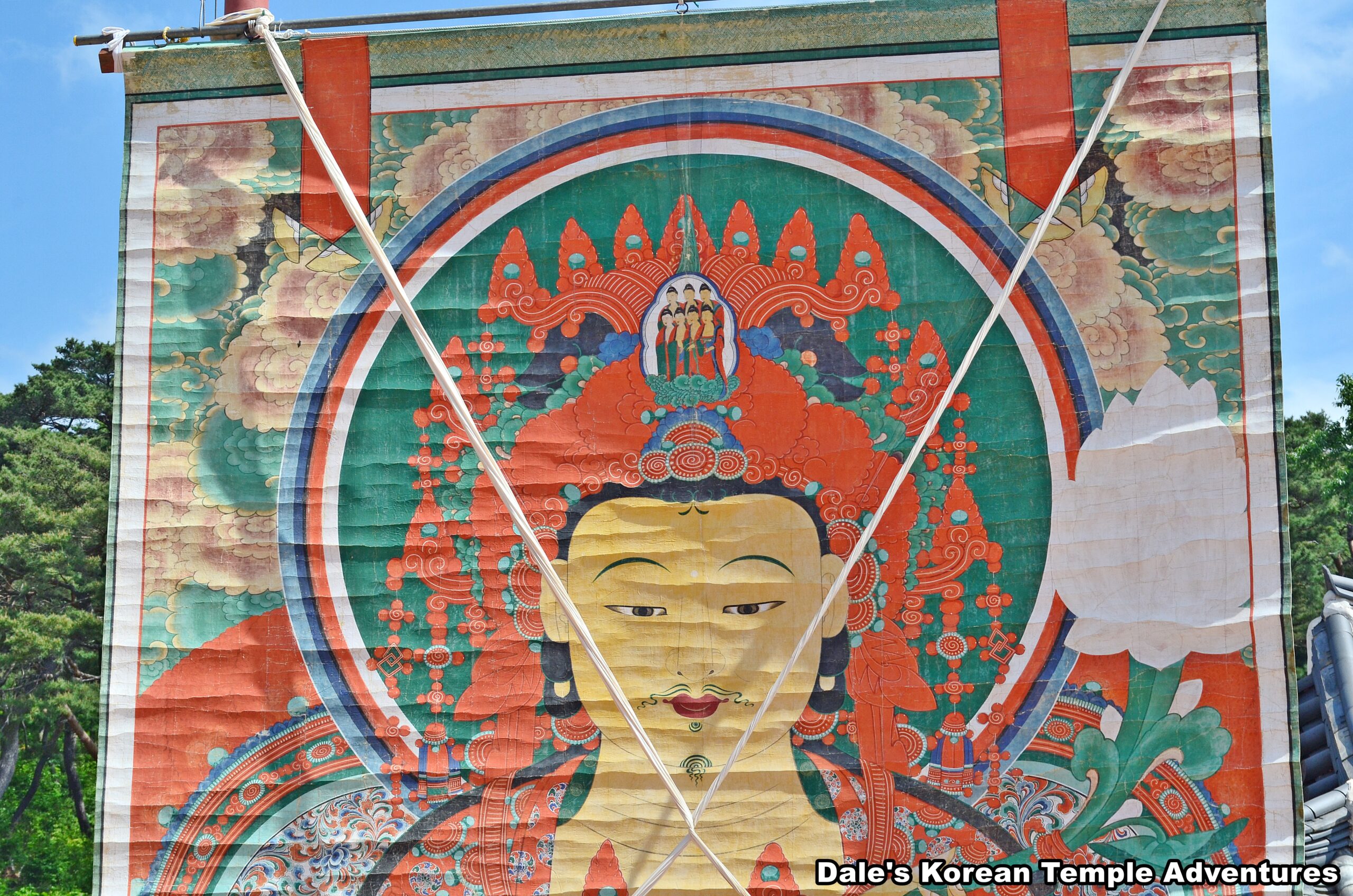
Historically, early Gwaebul hanging paintings are quite crowded in style and composition. These Gwaebul more closely resembled altar paintings (taenghwa) of “The Sermon on Vulture Peak Painting, or “Yeongsan Hoesang-do: 영산 회상도” in Korean. Starting in the 18th century, Gwaebul became taller and simpler in design. A great example of this can be found at Tongdosa Temple with the Hanging Painting of Tongdosa Temple (Sakyamuni Buddha), which is Korean Treasure #1350. The Gwaebul at Tongdosa Temple was painted in 1767. In this style of later century Gwaebul, the single image of Seokgamoni-bul has a dual purpose as a protector and a teacher.
Gwaebul Examples
In total, there are seven Gwaebul that are National Treasures. These include the Hanging Painting of Chiljangsa Temple (N.T. #296); the Hanging Painting of Ansimsa Temple (N.T. #297); the Hanging Painting of Gapsa Temple (N.T. #298); the Hanging Painting of Sinwonsa Temple (N.T. #299); the Hanging Painting of Janggoksa Temple (N.T. #300); the Hanging Painting of Hwaeomsa Temple (N.T. #301); and the Hanging Painting of Cheonggoksa Temple (N.T. #302).
In addition to these seven National Treasures, there are forty-seven other Gwaebul that are Korean Treasures, and an additional eight Gwaebul that are National Registered Cultural Heritage. Of these Korean Treasures, the Gwaebul from Geumdangsa Temple in Jinan, Jeollabuk-do, that was first painted in 1682, is especially beautiful. Legend states of this Gwaebul that villagers performed rituals in front of it and rain fell, which successfully ended a long standing drought in the region. The Gwaebul at Geumdangsa Temple, which is officially known as Hanging Painting of Geumdangsa Temple, is Korean Treasure #1266.
